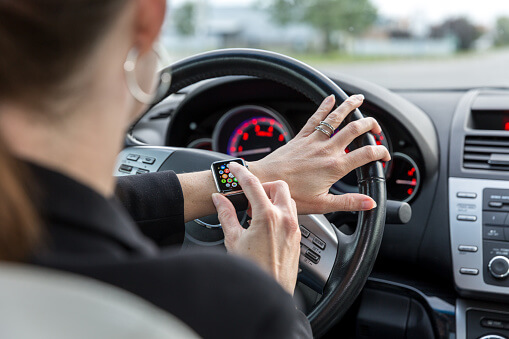An experienced rear-end accident lawyer knows rear-end crashes occur every day on roads throughout Chicago, Hyde Park, Bridgeport, Edgewater, Lincoln Park and surrounding areas. A significant number of these crashes happen because of tailgating.
Driver’s Prep reports tailgating is the fifth-leading cause of motor vehicle accidents in the United States. Tailgating happens in situations in which one driver is too close to the vehicle directly in front of his car. People tailgate because they are inpatient, because of road rage, or because they are unaware of the risks. A tailgating driver does not have time to react to what the vehicle in the lead does. When the lead vehicle slows down or comes to a stop, the rear vehicle that is tailgating cannot correspondingly slow or stop, and instead strikes the back of the lead car.
Drivers who tailgate can be held responsible for accidents that occur as a result of their failure to leave a safe following distance. The question motorists must answer is what exactly constitutes a safe following distance and how far back are you supposed to be?
What is a Safe Following Distance?
The general rule when it comes to a safe following distance used to be that a driver should keep one car length between his car and the vehicle in front of him for every 10 miles per hour of speed. In other words, when a car is traveling at 60 mph, the driver of that car should leave six car lengths in between his own vehicle and the car he is following.
The car-lengths rule could be difficult for motorists to measure, so the focus shifted from car lengths to the number of seconds between your vehicle and the car directly in front of you. The idea behind this new measurement was to choose a fixed object. Once the car in front of you passed by the fixed object, a certain number of seconds should pass before your own vehicle passes that same object.
The rule related to the number of seconds before a fixed object was passed used to be called the “two-second” rule because safety experts suggested making sure at least two seconds passed before your vehicle passed the same fixed object that the lead car passed. However, experts began to determine that two seconds was not really a long enough time to react. Now, it is more common for new drivers to be taught either the three-second rule or the four-second rule.
The three-second rule or four-second rule has the advantage of being the same for all speeds, rather than the car-length rule. However, drivers need to make sure that they realize certain road conditions necessitate a longer following distance. For instance, if you are on roads that are slippery due to precipitation, then you should decelerate and allow for a longer following distance. If fog or other conditions are affecting visibility, a longer following distance also makes a lot of sense. By leaving enough space between your car and the vehicle you follow, you can reduce the chances of a rear-end accident happening.
A Chicago, IL accident attorney can help after an injury. Call Coplan & Crane at 800-394-6002 to schedule your free consultation. Serving Chicago, Hyde Park, Bridgeport, Edgewater, Lincoln Park and surrounding areas.
















